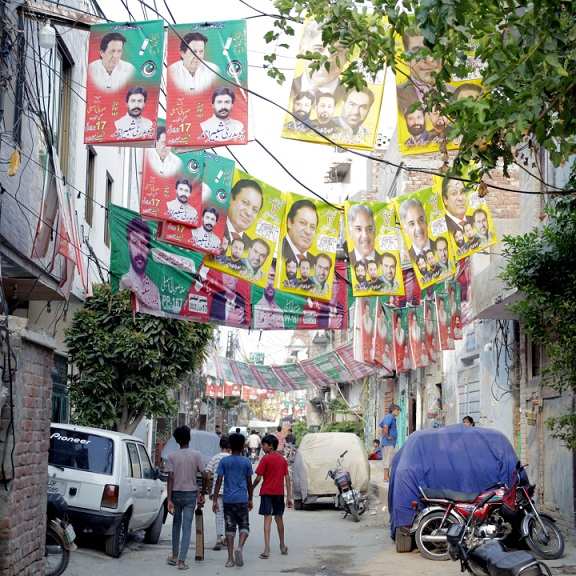Punjab’s population is not more than half that of Pakistan’s anymore. According to the provisional results of the digital population census made public by the Pakistan Bureau of Statistics (PBS), the province now accounts for exactly half of the country’s population.
The Bureau has tweeted recently that Punjab’s population stood at 116.83 million on April 30, 2023 according to the ongoing enumeration exercise. The door-to-door counting in the seventh population census has almost been concluded though it is kept open till 15th May in 66 districts for making minor adjustments and to address any complaints. The PBS has quoted total population of the four provinces at 231.15 million.
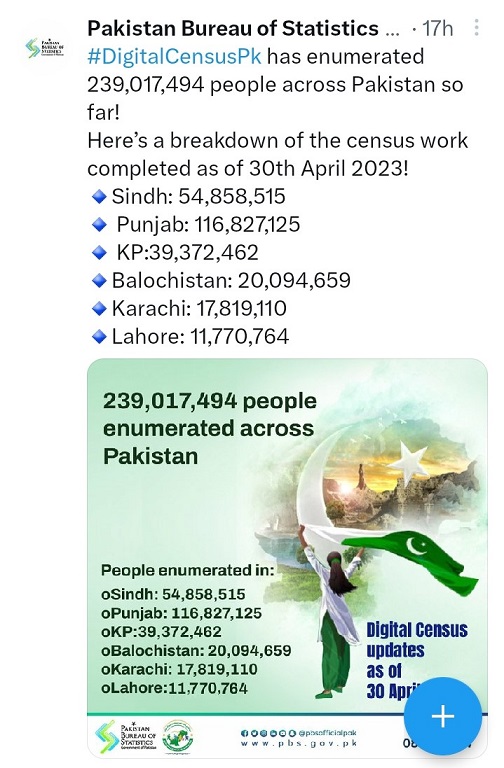
Punjab’s population was 60.88 percent of the country’s total (West Pakistan then) in first population census held in 1951. It has been declining consistently in successive censuses. The decline, however, has hastened in past two decades. The share of province in country’s population dropped from 55.63 percent in 1998 to 52.96 percent in 2017 - a decline of 2.67 percentage points. It has shown a further decrease of three percentage points in the latest exercise and now stands at 49.96 percent.
One of the immediate consequences of this change will be expressed in redistribution of National Assembly seats among the provinces. Punjab will lose eight seats in the lower house. Its present share of 141 seats will come down to 133, that is, exactly half of the total strength of 266.
Earlier, Punjab had lost seven seats in 2018 following reallocation after sixth population census held in 2017. Its share had come down from 148 to 141 in the then total strength of 272.
The total number of seats in the National Assembly has dropped during the period to 266 following the merger of erstwhile Federally Administered Tribal Areas (FATAs) in Khyber Pakhtunkhwa province. Since FATAs had no representation in a provincial assembly, their share in national legislature (12 seats) was kept at double their population-wise allocation of six. After the merger in 2018, the region has lost that special status.
Who will gain from Punjab’s loss?
Sindh has been the most ardent critique of the population census 2017. According to the rules, Council of Common Interests has to approve the returns of a census before they are officially notified.
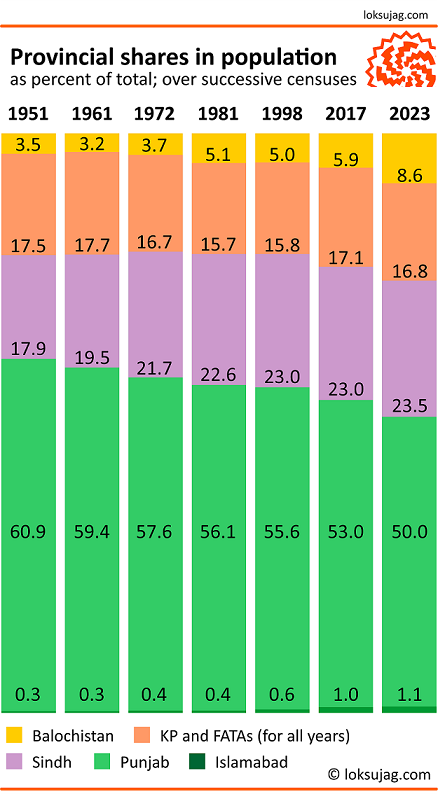
Sindh had refused to sanction numbers thrown up by the 2017 census and the parliament had to amend the constitution to give one-time permission to Election Commission of Pakistan to carry constituency delimitation for general elections 2018 according to the provisional, and not final, returns of the 2017 census.
Within Sindh, political stalwarts of Karachi had led the opposition to census results accusing authorities of gross undercounting in the country’s biggest metropolis. PBS has now quoted Karachi’s population at 17.82 million up by 1.8 million compared to 2017 figures. Lahore has registered an increase of 0.65 million during the same period.
However, according to the available figures, Sindh may not be the biggest ‘beneficiary’ of Punjab’s loss as the province is likely to gain only one seat in the National Assembly. Sindh’s gain may go up to two seats at the maximum if the current numbers change substantially over next two weeks. In either case, the increase will not benefit Karachi as its share is most likely to remain at 20 seats. The gain in seats thus will go to rest of Sindh which currently has 41 seats. It is not possible to know exactly which districts of Sindh will get these newly gained seat/s as district-wise breakdown of the province’s population has not been made public yet.
It will be Balochistan that will gain most of the seats lost by the Punjab. The population of the province has shown a whooping growth of 62.9 percent since 2017. The national growth during 2017 and current census stands at 15.1 percent, Sindh is in close league with 14.6 percent while Pakhtunkhwa lags behind at 10.9 percent growth and Punjab has registered a meager rise of 6.2 percent.
Consequently, Balochistan’s share of seats in National Assembly will go up from 16 to 23 – an increase of seven seats – while shares of Pakhtunkhwa and Islamabad are likely to remain the same at 45 and 3 respectively.
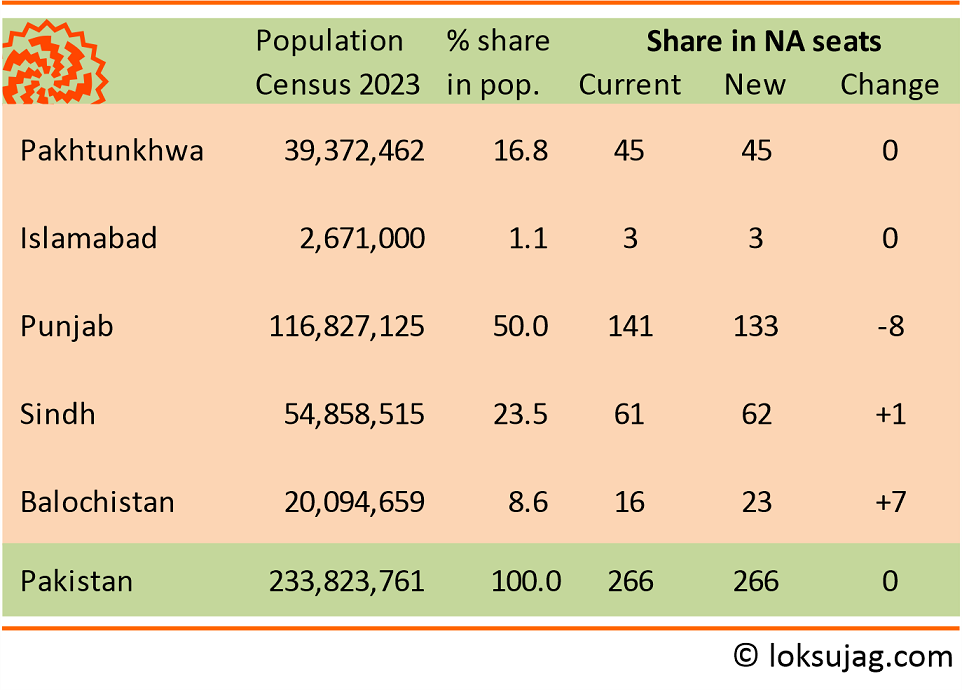
[The PBS Tweet does not provide population of Federal Capital Territory. For the purpose of calculating shares, we have projected Islamabad’s 2017 population at the growth rate that was observed during the period 1998 to 2017 thus arriving at the figure of 2.67 million for 2023. This brings the total population of the country to 233.82 million, including four provinces and the Federal Capital Territory and excluding Azad Jammu and Kashmir and Gilgit-Baltistan which are not represented in National Assembly.]
The differences in growth rates of different areas can be owed to differences in population (biological) growth rates, under or over enumeration in the last census and/or in the current census. The PBS, however, claims that use of latest technology in the current census has enabled it to promptly identify and resolve inaccuracies, including under-enumeration, over-counting and manipulation.
New delimitations and next general elections
The Election Commission is constitutionally bound to delimit electoral constituencies ‘in accordance with the last preceding census officially published’ [Article 51 (5)]
Also read
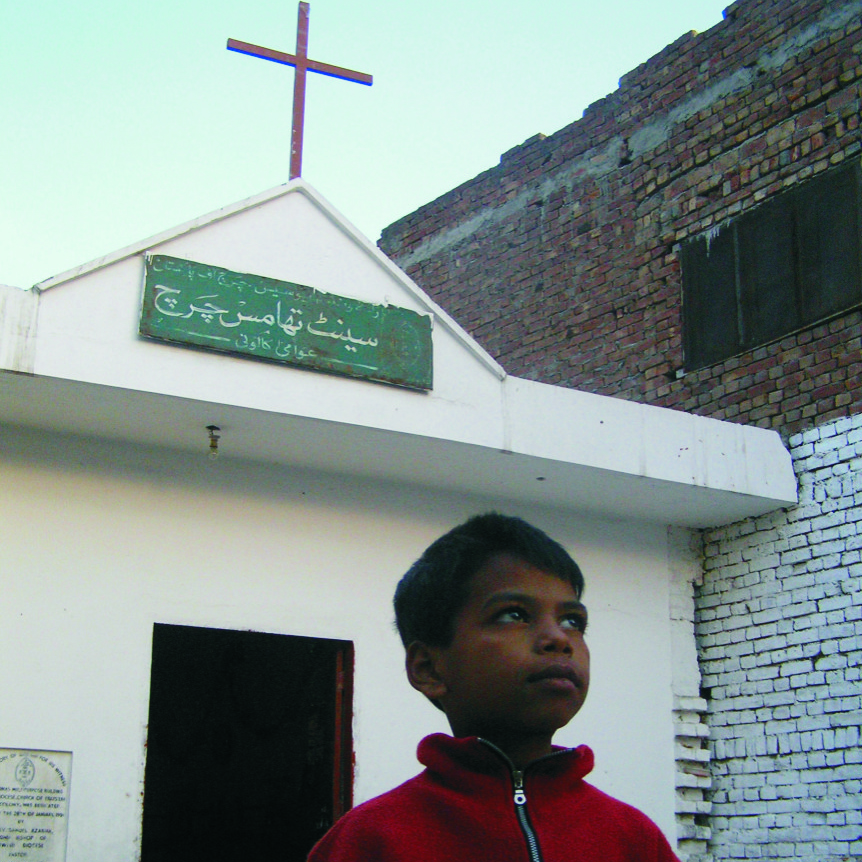
One in every five Christians missing in census
The same has also been made part of Elections Act 2017 as 17(2) ‘The Commission shall delimit constituencies after every census officially published’.
However, under clause 14 (1), of the Elections Act 2017, the Commission has to complete the delimitation four months before the general elections.
[14(1) The Commission shall, at least four months before the general election is due to be held on expiry of the term of an Assembly, prepare a comprehensive Action Plan specifying all legal and administrative measures that have been taken or required to be taken in respect of the election, including the following— (a) delimitation of constituencies; …]
If the current National Assembly completes constitutionally mandated tenure, the next general elections shall be held by mid-October 2023 which means the new delimitation has to be completed by mid-June. Pakistan Bureau of Statistics has recently extended the date of conclusion of the census to May 15, 2023 after which it will be presented in the Council of Common Interests for final approval before official notification of the results.
Published on 1 May 2023
